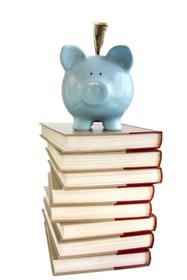Public School 166, the Richard Rodgers School of Arts & Technology, is a public school administered by the New York City Department of Education and located in the city's Upper West Side neighborhood of the borough of Manhattan. An elementary school, it serves about 600 pupils in kindergarten through fifth grade.
Serving 600 students in grades Kindergarten-5, P.s. 166 Richard Rogers School Of The Arts & Science ranks in the top 5% of all schools in New York for overall test scores (math proficiency is top 5%, and reading proficiency is top 5%).
The percentage of students achieving proficiency in math is 89% (which is higher than the New York state average of 52%). The percentage of students achieving proficiency in reading/language arts is 87% (which is higher than the New York state average of 49%).
The student-teacher ratio of 16:1 is higher than the New York state level of 11:1.
Minority enrollment is 45% of the student body (majority Hispanic and Asian), which is lower than the New York state average of 60% (majority Hispanic).
Quick Facts (2025-26)
- Grades: Kindergarten-5
- Enrollment: 600 students
- Student-Teacher Ratio: 16:1
- Minority Enrollment: 45%
- Overall Testing Rank: Top 5% in NY
- Math Proficiency: 89% (Top 5%)
- Reading Proficiency: 87% (Top 5%)
- Science Proficiency: ≥95% (Top 5%)
- Source: National Center for Education Statistics (NCES), NY Dept. of Education
Top Rankings
P.s. 166 Richard Rogers School Of The Arts & Science ranks among the top 20% of public schools in New York for:
Category
Attribute
Overall Rank
Most improved public schools
Math Proficiency
Reading/Language Arts Proficiency
Science Proficiency
Diversity
School Overview
P.s. 166 Richard Rogers School Of The Arts & Science's student population of 600 students has declined by 5% over five school years.
The teacher population of 37 teachers has stayed relatively flat over five school years.
Grades Offered
Grades Kindergarten-5
(Supplemental virtual)
(Supplemental virtual)
Total Students
600 students
Gender %
Total Classroom Teachers
37 teachers
School Rankings
P.s. 166 Richard Rogers School Of The Arts & Science ranks within the top 5% of all 4,346 schools in New York (based off of combined math and reading proficiency testing data).
The diversity score of P.s. 166 Richard Rogers School Of The Arts & Science is 0.65, which is less than the diversity score at state average of 0.72. The school's diversity has stayed relatively flat over five school years.
Overall Testing Rank
#87 out of 4346 schools
(Top 5%)
(Top 5%)
Math Test Scores (% Proficient)
89%
52%
Reading/Language Arts Test Scores (% Proficient)
87%
49%
Science Test Scores (% Proficient)
≥95%
78%
Student-Teacher Ratio
16:1
11:1
American Indian
n/a
1%
Asian
12%
10%
Hispanic
15%
30%
Black
4%
16%
White
55%
40%
Hawaiian
n/a
n/a
Two or more races
14%
3%
All Ethnic Groups
Participates in the National School Lunch Program (NSLP)
Yes
Eligible for Free Lunch
18%
54%
Eligible for Reduced Lunch
1%
3%
School Statewide Testing
School District Name
Source: National Center for Education Statistics (NCES), NY Dept. of Education
Profile last updated: 02/09/2025
Frequently Asked Questions
What is P.s. 166 Richard Rogers School Of The Arts & Science's ranking?
P.s. 166 Richard Rogers School Of The Arts & Science is ranked #87 out of 4,346 schools, which ranks it among the top 5% of public schools in New York.
What schools are P.s. 166 Richard Rogers School Of The Arts & Science often compared to?
P.s. 166 Richard Rogers School Of The Arts & Scienceis often viewed alongside schools like Anderson School, P.s. 87 William Sherman by visitors of our site.
What percent of students have achieved state testing proficiency in math and reading?
89% of students have achieved math proficiency (compared to the 52% NY state average), while 87% of students have achieved reading proficiency (compared to the 49% NY state average).
How many students attend P.s. 166 Richard Rogers School Of The Arts & Science?
600 students attend P.s. 166 Richard Rogers School Of The Arts & Science.
What is the racial composition of the student body?
55% of P.s. 166 Richard Rogers School Of The Arts & Science students are White, 15% of students are Hispanic, 14% of students are Two or more races, 12% of students are Asian, and 4% of students are Black.
What is the student-teacher ratio of P.s. 166 Richard Rogers School Of The Arts & Science?
P.s. 166 Richard Rogers School Of The Arts & Science has a student ration of 16:1, which is higher than the New York state average of 11:1.
What grades does P.s. 166 Richard Rogers School Of The Arts & Science offer ?
P.s. 166 Richard Rogers School Of The Arts & Science offers enrollment in grades Kindergarten-5 (Supplemental virtual).
What school district is P.s. 166 Richard Rogers School Of The Arts & Science part of?
P.s. 166 Richard Rogers School Of The Arts & Science is part of New York City Geographic District # 3.
School Reviews
Review P.s. 166 Richard Rogers School Of The Arts & Science. Reviews should be a few sentences in length. Please include any comments on:
- Quality of academic programs, teachers, and facilities
- Availability of music, art, sports and other extracurricular activities
Recent Articles

How Public Schools Support Students on Free / Reduced-Lunch Programs
Explore how U.S. public schools support students eligible for free or reduced-price lunch through nutrition, academic, and wraparound services in 2025.

Hidden Costs of Public Schools: Fees, Supplies & Extras
Explore the hidden costs in public schools鈥攆ees, supplies, extracurriculars鈥攁nd how parents can plan for them in 2025.

Public School Funding 2025: What Families Should Know
Essential insights on public school funding in 2025鈥攈ow it works, what鈥檚 changing, and what families should know to stay ahead.





